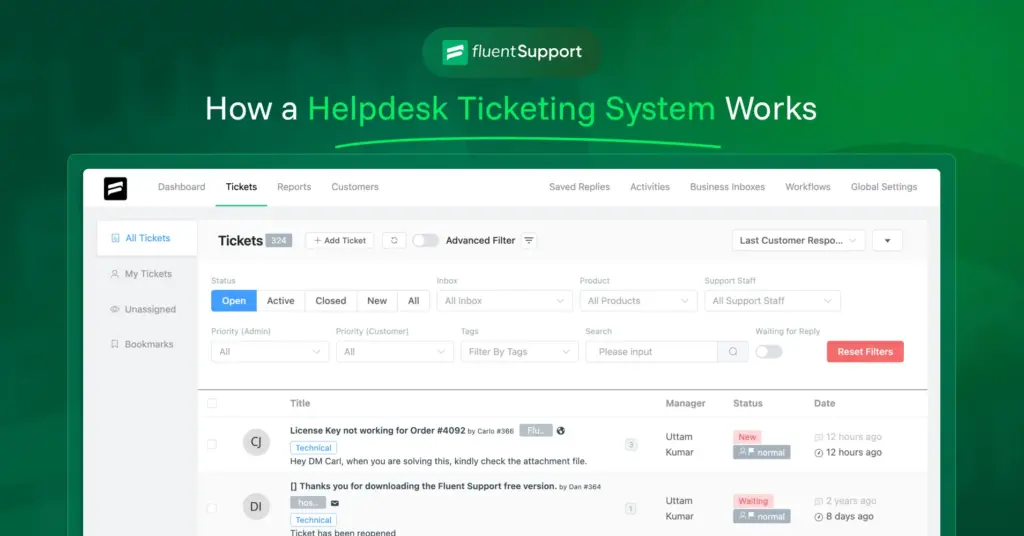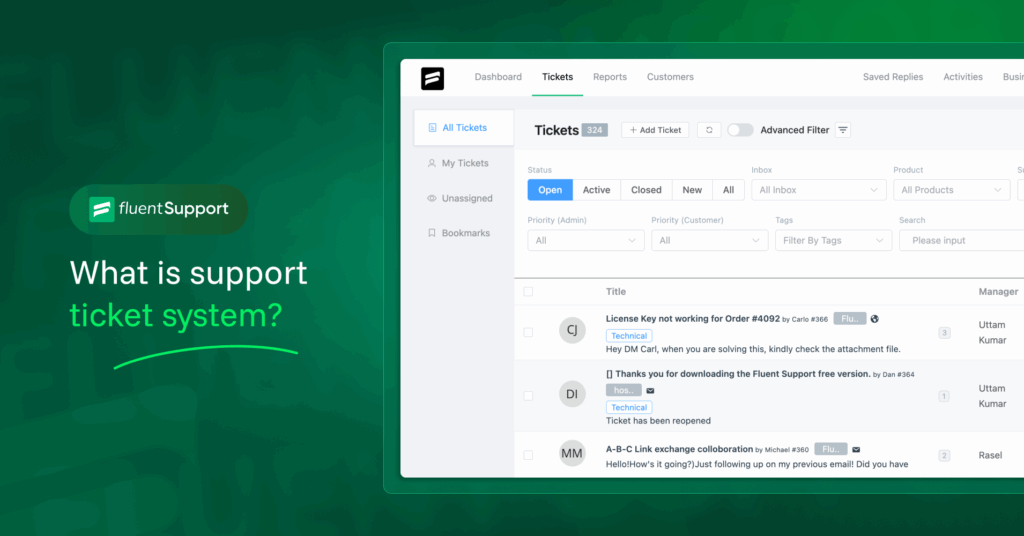
12 Major Customer Service Challenges
By Rasel Siddiqe
December 2, 2022
Last Modified: November 13, 2025
What’s the biggest factor that differentiates you from your competitors?
If your answer is anything other than customer service, then you’re not standing out from the crowd. With as much as 50% of customers claiming they’ll switch companies after just one bad service experience, it’s obvious you can’t treat it as an afterthought.
But why is customer service difficult to get right anyway?
In this article, we’ll look at what makes customer service difficult in general and the customer service challenges businesses need to overcome in 2023.
Why is Customer Service a tough job?
Customer service, as the title suggests, is a customer-facing job. Like every other job, it too comes with a variety of distinct customer service challenges that make the job demanding by itself, without external stressors. Such factors are,
The nature of work
Facing customers is a demanding place to be, regardless of which team you are on. Being constantly on call and interacting with a large number of people isn’t something the human brain was designed to handle.
Left to itself, the human brain can’t handle any more than 25 faces every day. That’s less than the average number of interactions an agent faces in a medium-sized enterprise. Moreover, these interactions aren’t pleasant meet & greets. Rather they are technically complex interactions that require a decent amount of thought and ingenuity. Not to mention the effects of the holiday season rush on customer service
Simply put, it’s not a job for the faint-hearted.
Company priorities
Many companies deploy service teams without the relevant knowledge to operate and maintain them. This can be for any number of reasons, but the core of it is as simple as not understanding the value of customer service.
Some companies also struggle with correlating accurate KPIs to measure service efforts. In some cases, this leads to poor evaluation of the service team’s impact on overall business goals. This makes service jobs especially difficult.
Work environment
The company work environment impacts no other team as much as the service team. That’s because service agents convey the vibe of the company to the customers. An unhealthy work culture can seep into the agent’s behavior and can severely impact the customer’s satisfaction with the service team.
12 customer service challenges
In this section, we’re going to look at the most predictable challenges customer service teams will face in the coming years. We’ve divided them into 4 broad categories, with individual issues sorted under them accordingly.
Resources (Availability and Scalability)
The biggest challenge for service teams is going to be resources in the coming years. Everything, from technology to markets, is changing so rapidly that customer service teams need to be under constant upgrades, which is easier said than done. The biggest hurdle in this process is the availability and scalability of resources that are available. These issues mount up into the following facets.
Ticket overload
The number of queries or requests a service team faces is the simplest challenge to identify. If your agents are swamped with complex support tickets, it points to problems in a variety of places outside of customer service. It could be poor documentation, onboarding, product design, and even a lack of experienced agents.
But whatever the reason, growing numbers of service queries is a challenge that mounts up on the service team and can cause a drop in customer satisfaction. Especially since more service queries mean more work for the service team. Often causing agents to experience burnout, degrading the quality of service
No proper tools
The second resource challenge is the lack of appropriate tools. A proper service tool simplifies agents’ work by providing insights into the job and features to enable agents.
This includes automation, saved responses, email piping, and an intuitive UI – all hallmarks of a solid business messaging platform. If your current system lacks any of these crucial features, it makes your service team’s job that much harder to do.
On top of that, if the UI isn’t intuitive or if it doesn’t provide the necessary information and opportunity to collaborate, that only adds to the challenge.
Lack of Crisis management
Customer service is a time-sensitive job. So when crises occur that slow down / halt the service process, it’s a nightmare. Not even just for the service team but for the company overall. If the service team is down due to unforeseen reasons, you’ll quickly see other departments feel the brunt of it.
Crisis management is going to be a huge challenge without the proper fail-safes and contingency plans in place.
The best way to tackle this challenge, regardless of the kind of crisis, is to develop your workflows and funnels to account for possible crises and allow teams some autonomy to figure it out themselves.
Support is in your Inbox!
Provide customer solutions through emails right from your tickets dashboard.
Keeping service promises and expectations
Meeting customer expectations is a challenge we’ve already covered. However, it’s still good to mention this here. The service team, for the most part, works to realize the promises made by the marketing team. They also have to account for customer expectations and changes in minimum demand.
As a rule of thumb, the minimum demands have changed after the Covid-19 pandemic, and they are not going back to the way they were. So service teams need to be in the loop with the whole company to actually deliver on the promises. The most common issues that occur are,
Misunderstood needs and pain points
If the service team doesn’t understand a customer’s needs and pain points, it causes 2 major problems
- Service agents are unable to provide support proactively
- Customer satisfaction gets harder to achieve
While customers will come in with their needs, it’s still crucial for your service agents to know what to expect. This will allow your agents to anticipate customer needs and address pain points without needing much time to prepare.
Unreasonable demands
Another common issue will be managing unreasonable demands and requests. Customers can come in with ridiculous demands and suggestions about your product or service. While these suggestions are something you should value, you can’t act on all of them.
It’s crucial to manage these demands with a clear but understanding approach. In most cases, the challenge is to say no to such expectations. However, it can be challenging to put down a request.
The best solution is to be prepared for these demands beforehand and handle them with initiative and rationale.
No escalation protocol
As the issues we already discussed pile up, agents eventually find issues that need upper-level clearance to solve. Not having an escalation protocol means there will be no clear-cut manual to handle these issues or designated executives to handle them.
This can cause a plethora of issues that are too broad to discuss here. But the point still stands. Your agents need a protocol to handle issues that are beyond the scope of their role.
Easing Customer Experience
Customer experience is the sum of all interactions a customer has with your business. A huge challenge for businesses, in general, is to smoothen this experience as much as possible. Because of its company-wide scope, customer experience is a business challenge. But service teams have to bear the brunt of this challenge due to the following issues,
Forwarding
Forwarding customer queries from one team to another has a negative impact on the satisfaction rating of a company. Whether you forward a call or reassign the customer to a new agent, it can cause inconvenience for the customer.
Some customers can even lose their temper simply because of waiting too long to get the hang of the proper team. Smoothening this forwarding process is a challenge for service teams. Moreover, there needs to be a minimum level of delegation and prioritization involved while assigning and forwarding tickets.
Not aligned with buyers’ journey
The service team is part of the customer relationship management process, and their activities need to reflect that. Ideally, customer service teams are trained to handle customer queries in general. But the truth is, service efforts need to feed into the later steps of the CRM process as well.
This includes improving customer retention and reducing the churn rate in the later stages of the CRM process. Mainly by creating trust and reliability in the customers. This in turn makes customers loyal. Aligning the service workflow along with the CRM process is undoubtedly a big challenge for service teams.
Slow response and resolve rates
Response and resolve rates are how you measure the efficiency of the customer service team. Customers hate being on hold, so to keep them satisfied, service needs to be fast without compromising quality. Meeting this time sensitivity is a huge challenge for service agents, especially when the team is understaffed or ill-equipped to handle the pressure.
Intrinsic community challenges
Apart from the technical aspects, there are challenges that involve the community and values involved in customer service. The human element in the service chain is a challenge in and of itself. The major issues in this category are.
Hiring and training personnel
Service agents aren’t born. They’re made. The good ones especially. To get good service agents for the team, you need to tackle two fronts. First, you have to hire agents with basic skills a customer service agent needs, most commonly using job search sites, for example, Jooble.
After you’ve hired capable people, it’s a matter of training them to become familiar with the company and its products. But the challenges also extend to communicating the brand’s message to the agents and making sure they are able to convey that message to the customers.
Omnichannel and 24/7 availability
Round-the-clock service isn’t a must for every business, but in some industries, it’s the standard. Sourcing people, managing time schedules, and handling the logistics of 24/7 support are some of the biggest challenges.
Similarly, it’s also an issue to offer omnichannel if you don’t already have a system running. To get ahead with omnichannel, you need to research your customers, where they communicate, and what they say about you. After finding these insights, it’s a matter of creating the strategies for each channel and training relevant personnel.
Rude and angry customers
Lastly, we have non-cooperating customers. Handling abusive customers with questionable behavior is probably the most taxing part of the job. It causes mental health problems, fatigue, and even debilitating burnout for agents.
This is one of the biggest customer service challenges because you can’t manage this issue with one solution. It usually takes a combination of stern policies, a chain of command, and staff training to manage it effectively. However, once the systems and training are in place this issue can be handled on a day-to-day basis.
Wrapping Up
Customer service as a field needs to evolve as fast as the customer’s needs. It’s all a matter of implementing the right technologies, solutions, and policies to make the service experience effortless. For companies trying to achieve success through customer service, it’s the best way to stand out from the rest and build meaningful experiences for all your customers.
Your own Support Portal in 5 minutes!
Start off with a powerful ticketing system that delivers a smooth customer service experience for your customers.












Leave a Reply